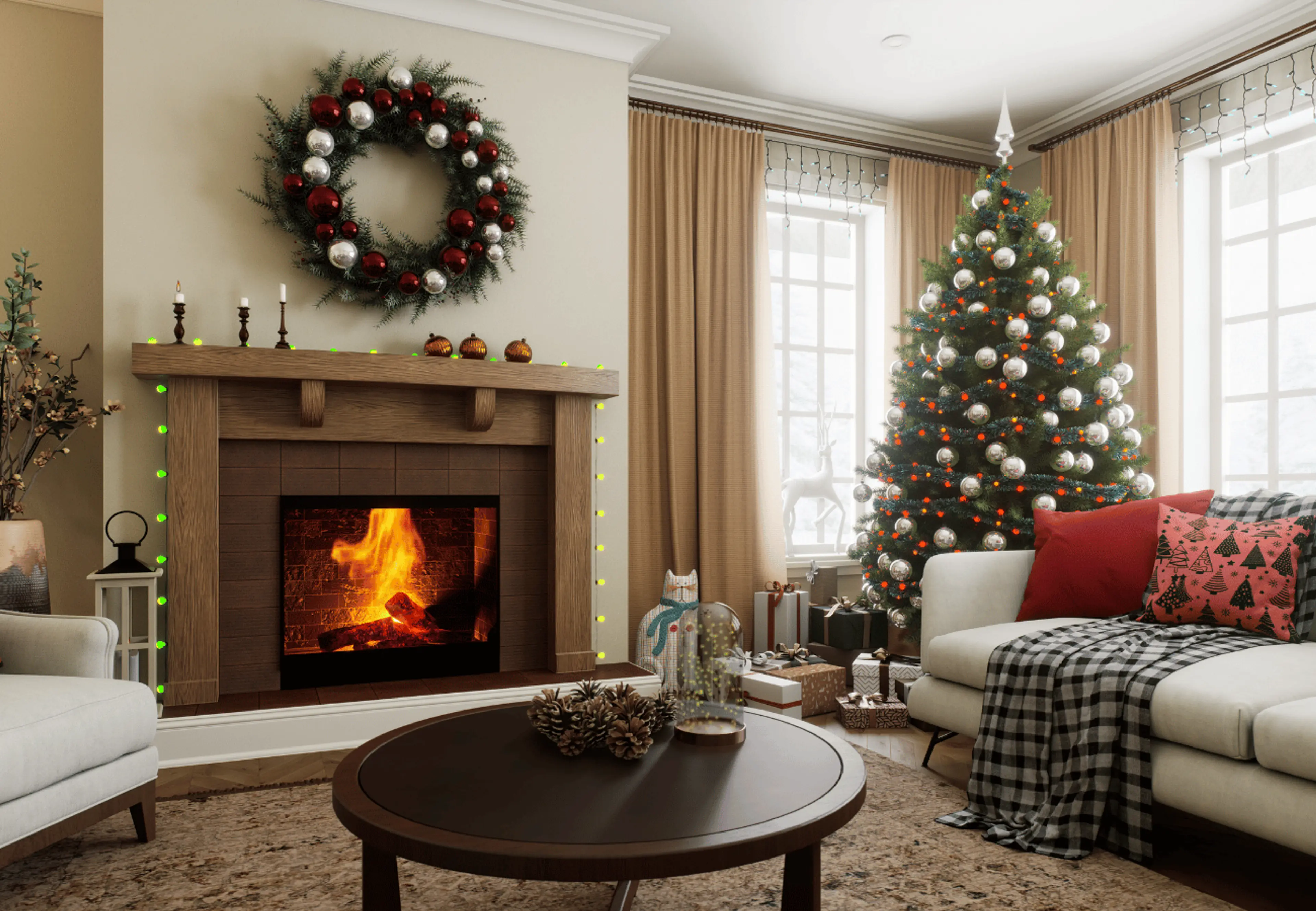A Guide To Choosing Wall Colours For Each Room Of Your House

 Dec , 2020
Dec , 2020- Berger Speaks
- 4 Min Read
At Berger Paints India, we are in love with the transformative power of colours and how it can lend beauty to any space it is used in. We have created a handy guide for trendy and fool proof wall paint colours for every spot of your house so that it feels like home. Start reading!
Home painting transforms the home giving it a fresh appearance, but choosing the right wall colour for each room of your house is a task. Have a colour scheme that complements your interiors, the furniture, and reflects your personality. So, whether you’re designing your new home or revamping your space, the perfect wall paint colour is what makes a difference, which will enhance the interiors. A wall colour is also the easiest way to spruce up your home without a major overhaul.
How To Choose Interior Paint Colours?
Make sure you choose interior room wall colours that send off happy vibes with an elegant finish. Pick colours that match your furniture and upholstery. Read on more to know on tips to choose colours and best colour combinations for your home.
Which Are The Best Colours For Home For 2023?
Muted tones of green, blush yellow and mauve will be some of the trending room wall colours for 2023. Being warm, these are a great contrast to wooden shades of the furniture. Apart from these, vibrant orange and bold red too will see a rising trend.
Wall Colour Ideas For The Living Room
Living room is one of the most crucial rooms that makes the first impression, welcomes guests and sets the vibe of your home. For this space, you can choose earthy or neutral room wall colours like aqua mint, French vanilla, emerald green, or white. You can choose beige, grey, or blue for your home’s usual colours. Bright colours are fantastic injecting an elegant finish to the room, but a distinctive living room design plays more colour, texture and focuses on particular shades.
Wall Colour Ideas For Dining Room
Meals together can be enhanced with a fantastic dining room colour combination, of course lights and the furniture make way for the luxurious look, but the wall paint is what forms the basis. Choosing the ideal wall paint colour for the dining room will mostly depend on how you want to use it. A bold and vibrant colour like hues of green or pink will set the right mood for those who enjoy throwing parties. Neutral colours like grey, beige might be a fantastic choice if you frequently you are looking at this place as your morning serenity to get your creative juices flowing. Wooden furniture with velvet chairs is an opulent add-on to the house wall colour.
Wall Colour Combination Ideas For Home-Office
Having a home office that is tailored to your preferences and needs in the age of remote work makes the agony of endless Teams calls tolerable. The space can be made lighter by using light grey or white tones, with warmer tones acting as accent walls to create a fantastic background for your computer. Choose warmer and deeper wall colour combination of green, coral tones or vibrant shades of yellow, which are likely to uplift your mood, if you’re more interested in enhancing your emotional wellbeing and creative abilities.
Wall Colour Ideas For The Kids Rooms
Your kids room should be one that inspires wonder and curiosity, and makes it their wonderland. The colour of your child’s room establishes the atmosphere and design of the space. Additionally, the right wall colour selection gives the space a peaceful aura. Choose a colour in lighter and softer tones if you’re trying to create a theme. You can also opt for brighter hues to add a surprise element, more colour, and life, since these will also improve the natural light in the space.
Home Colour Ideas For The Bedroom
The bedroom is your haven. It is where you retire to let the worries and stress of your daily life fade away. It is where you carve out time to do all the things you love, whether it be reading, watching TV, or simply listening to soft music. For this reason, choose soothing hues, such as a cool shade of blue or pastel shades of purple or pink, which will give your area a serene atmosphere and represent the zen and calmness you want to infuse into it.
Wall Colour Ideas For Puja Room
Choose colours for the wall that are white, lavender, beige, light yellow, or pale green to make the puja room a tranquil space. Choose a bright colour and a delicate colour for the puja space. You can do this by painting the wall a cream colour and adding a touch of gold or crimson. For the puja room, the colours red and gold are said to be lucky.
Wall Colour Ideas For The Guest Room
You can choose a colour scheme for your guest room that includes eggshell tones, lemony hues, creamy neutrals, or sea tints. Additionally, a chocolate brown colour is a great choice to make your guest room cosy and inviting. Solid wood furniture can be used to complete it and make your guests feel at home.
Wall Colour Ideas For The Kitchen
White, grey, yellow, and green, or two colour combination for walls are the best colours for a kitchen. These hues will give your kitchen a lively appearance. The hunger is stimulated by warmer tones. So, to turn your kitchen into a gourmet sanctuary, choose a spicy chilli or orange colour.
Wall Colour Ideas For The Bathroom
Paint your bathroom in any cooler shades of blue, green, or creamy white to create a tranquil space in your house. If you don’t want to explore, there are other shades of grey and pure white. There are several options available when it comes to decorating your bathroom walls. The idea here is to choose the material you want before exploring the available colour and pattern options, whether it be tiles, marble, glass, or plain plaster.
Wall Colour Ideas For The Ceiling
Choose soft hues for the ceiling to go with the other walls. For ceilings, white, off-white, and cream are the most common paint colours. However, one can paint it yellow, blue, or even in textured paint for a dramatic impact. One may use metallic gold paint to add a hint of grandeur to the ceiling. Making a dramatic statement and adding some glitz by painting the ceiling a colour other than the walls can be done. An accent colour might be used to finish the ceiling. While a light colour can suggest a high ceiling, a dark colour can visibly reduce a room’s height. Use the same colour for the ceiling and walls to create a cohesive appearance.
Home Colour Ideas For The Exterior
Selecting the ideal colour for the exteriors is equally challenging. The exterior portrays not only the character of the home but also that of its people. It must therefore be chosen while taking into account the home’s general atmosphere. Keep the exterior wall painting basic and elegant if minimalism is the main focus. You can choose from exterior emulsions from Berger range. In addition to this, the newest fashion is to combine deep blue and cream to create vivid colours. Although white is one of the most popular options, you will incur additional costs for maintenance and periodic whitewashing.
Tips For Choosing The Perfect Colours For Your Home
- Know your favourite shades; this will serve as your own colour palette.
- When choosing an accent colour, consider the existing furniture. To draw attention to your furniture, choose a neutral or complimentary hue.
- Take into account the size of the space: Lighter colours will enlarge the space, while darker colours will make it cosier.
- Consider the overall colour scheme when choosing colours for various areas of your home to ensure a smooth transition from one space to another.
- Consider the lighting: Before selecting a wall paint colour, consider the type of lighting your area will have. While incandescent lights bring out the softer tones and fluorescent lights emphasise the strong blue tones, natural light reveals the paint’s actual colour.
- Mood of the room: Before choosing a colour, think about how the room will be used and the mood it will create. Warm wall paint colours should be used to create a high-energy space; cool blue wall colour and grey wall colour should be used to create a soothing atmosphere. Additionally, you can select several sheen levels based on how the area will be used.
check for any query you have about the blog
Frequently Asked Questions
For your living room, timeless hues include lime green, peach, white, and beige. These colours are always aesthetically pleasing and never go out of style.
Absolutely! Warmer tones will make the living room space appear bigger, and can serve as aesthetically pleasing even with changing trends.
Warm earthy neutrals, white and cream, muted shades to light terracotta and other combinations of grey and white are some trending exterior paint colours.
You can choose to have a different colour in every room based on the use of the room. For example, you can bolder shades in the dining area and a soft hue in the living room or the bedroom.
Using the monochromatic colour scheme, you can pick one hue as your dominant colour and paint the neighbouring room in the same colour, but a shade or two lighter or darker.








